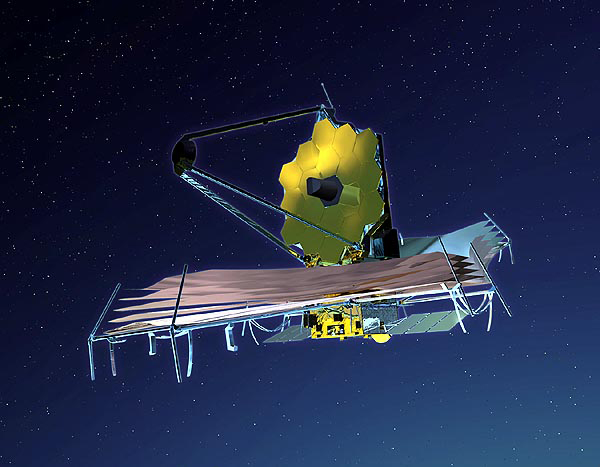Even last month, people were still continuing to write sentences like "JWST will be able to..." about 2020.
They have forgotten how to be trusted guides for the public, how to ask those awkward questions of programs they happen to like. And JWST has earned a lot of questions. Because an Independent Review Board found serious flaws in the implementation, design, and transparency of the program. The only reason they recommended it continue is because it is, as U.S. Congressman Stewart McKinney coined the term in 1984 about a bank, "too big to fail" - if it takes off on time it will be 1000% over budget, more than the entire Large Hadron Collider. A lot of money for a telescope. Not that you get any of that from the NASA press release, which is instead spun as well as any corporate public relations effort.

Like all telescopes, JWST can 'look back' in time. You probably recognize that the sun you are seeing actually happened 8 minutes ago. The universe was created some 13 billion years ago and so it understandably takes billions of years for light, which is how we see, from afar to reach us. The Hubble Space Telescope sees 'back' to 800 million years after the Big Bang. JWST, should it go up in my lifetime, will be a 21-foot infrared mirror orbiting 1 million miles from Earth that should be able to see light from about 250-400 million years after the Big Bang. All great.
But I was always more skeptical about it taking off in a reasonable time and my reason was sound. At the time it was proposed, there was only a "joint confidence level" of 50 percent it could be completed. NASA made a proposal based on the magic of capitalism, a Moore's Law of aerospace engineering, all the while suppressing the freedom to create new technology by burying creativity in government bureaucracy. So how did that escape scrutiny at the time? For one thing, NASA wants to stay in business. They sold a great deal of hype to legislators. And President Clinton has been rightly criticized for not funding science much at all. NIH was moribund, NASA's budget declined, he canceled President Reagan's Superconducting Super Collider and America's nuclear science programs, and his Dickey-Wicker law handicapped biology (which is why human embryonic stem cell technology was created without federal funding). He was going to go down in history as the most anti-science President of the 20th century. But everyone loves space so he bought into that. And no one at the top knew how to ask the awkward questions about engineering because they lacked the expertise the actual James Webb had.
As Michael Turner, professor of astronomy and physics at the University of Chicago, phrased it way back in 2010, "When Webb bleeds, the rest of space science hemorrhages."
Congress will not keep throwing money at this thing so as Webb sucks up more of the NASA budget, other worthy programs that had realistic timeframes and could be completed on time are going to be denied. And that is bad for science.




Comments